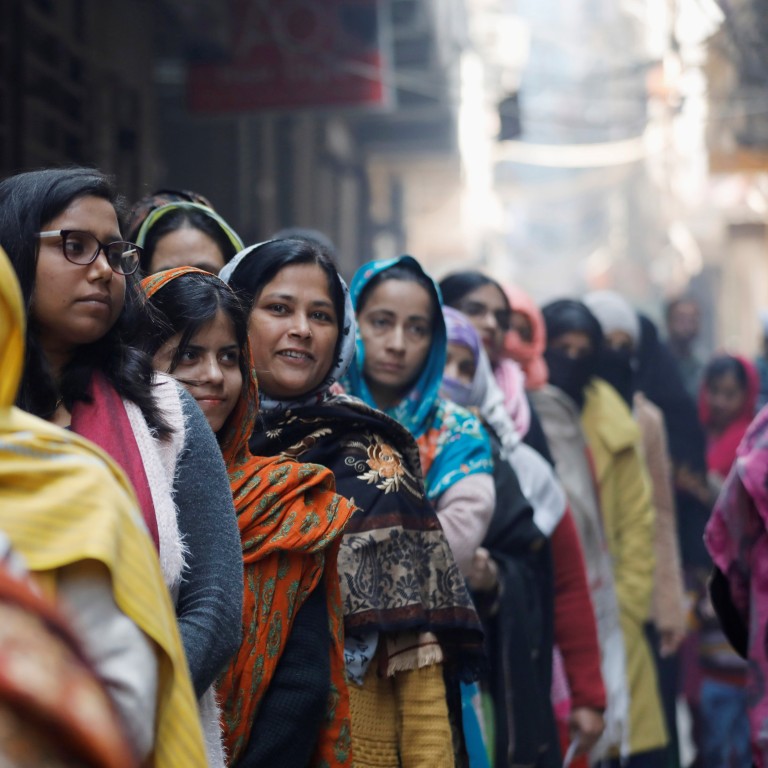
Modi shows how India’s ‘boisterous democracy’ can be used to benefit the few
- The BJP’s defeat in recent state elections may signal a belated awakening of the majority Hindu voters to the party’s cynical and backward vision of the nation
- The larger problem, however, is how vulnerable voting-age Hindus are to ideological manipulation
After spending 21 years abroad, I returned to India with my family in 2018 hoping to spend more time with ageing relatives, rebuild once-strong friendships and revive rusty professional ties. It did not take long for me to realise that, during my years abroad, not only had I become a different person, but India, too, had become a different country.
So, I said my goodbyes and relocated to Dubai. But, like the millions of other Indians who have left their country in search of a better future, I am under no illusion that voting with my feet will solve any of India's problems.
Being a boisterous electoral democracy is impeding Indians' intellectual evolution as well as sapping the dynamism of its young population. That is the conclusion I have drawn from my frequent visits to India, my year-long stay in Delhi and discussions with former bureaucrats.
What many political scientists believe has kept Indians together as a single nation in the face of daunting challenges has degenerated into a dysfunctional system urgently in need of reform.

But such an explanation does not capture every nuance of a complex phenomenon. Hindus are possibly the latest gullible victim of a system that has been gamed over the decades by canny, power-addicted politicians and monetised by influential industry figures and media barons.
The Indian election, explained: how Modi’s ‘good days’ turned bad
To many Hindus in more liberal professions such as teaching and journalism, the truth is simple if inconvenient: a bunch of co-religionists who have run out of ideas are seeking to whip up nationalist passions as a diversionary tactic.
Yet, a much wider swathe of Hindus are reluctant to admit that a political party on which they had pinned their hopes of a national renewal is floundering like amateurs despite its monopoly over power (303 parliamentary seats vis-à-vis the opposition Congress’s 52).
The blame cannot be laid entirely at the Hindu electorate's door. The opposition parties did not make a spirited attempt to challenge the BJP’s claims and denials during the elections, nor offer a stable, secularist alternative.
Undoing the damage inflicted on the country’s norms and institutions as a result of Hindu voters’ overestimation of the BJP’s maturity and competence may take a long time, but at least the first stone has been cast.

That being said, it would be folly to think that a mere change of government at the national level in the next general election will act as a panacea for India's many ills.
Prime Minister Modi swept to power in 2014 on a wave of optimism conjured up by promises to create millions of jobs, the recovery of stolen national wealth and introduction of badly needed reforms. Despite some important legislative successes and a widening of the tax net, however, his government has failed to kick-start the economy or forge a clear and inclusive national vision.
How Modi’s budget failed India’s poorest and most vulnerable
Unsurprisingly, the GDP growth rate is expected to decline to its lowest rate in years (about 5 per cent for 2019-20), prompting the International Monetary Fund to warn recently that India's poor performance is holding back global economic growth.
There is no sign the ruling party aspires to build a sophisticated, law-abiding and innovation-oriented society. Instead of exhorting Indians to embrace universal moral values such as tolerance, equality and human dignity, Modi has increasingly positioned himself as the natural leader of a party obsessed with ancient prejudices and animosities.
Sadly, even if the Modi government recognises its mistakes and reverses course at this late stage, precious time has been lost.
Hong Kong was the protest story of 2019. This year it’s Modi’s India
In case Indians choose to toss out the BJP government in the parliamentary elections scheduled for 2024, there is no guarantee that the current opposition will prove any more competent in governance or economic management.
As things stand, instead of providing checks and balances against the classical “tyranny of the majority”, India’s much vaunted “boisterous democracy” has disproportionately empowered those who have put their political objectives ahead of the long-term national interest.
The majority Hindu population may have become more right-wing since I first left the country in 1997, but voting-age Hindus have certainly shown themselves to be much more vulnerable to the usual political platitudes and ideological manipulation. The price for that is being paid by Indians of all faiths.
Arnab Neil Sengupta is a journalist and commentator on the Middle East and South Asia

